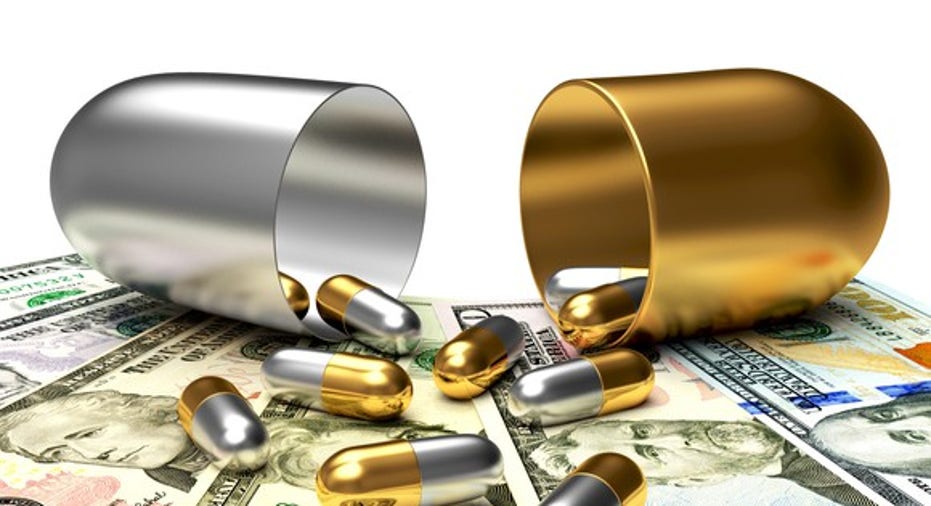Pfizer's 3 Fastest-Growing Drugs

Pfizer Inc. (NYSE: PFE) is turning an important corner. After years of declining sales due to patent expiration on its megablockbuster cholesterol drug Lipitor, the company finally appears to be on a path back to reporting year-over-year growth.
Investments in mergers and acquisitions deserve some credit for its improving fortune, but a lot of it also rests on fast-growing drugs churned out by its research and development team. Specifically, the company's notching significant sales growth from cancer drug Ibrance, anticoagulant Eliquis, and rheumatoid arthritis drug Xeljanz. Can these drugs continue to support Pfizer's performance in 2017?
Image source: Getty Images.
Pfizer's trio of fast growers
The company's fastest-growing drug last year was Ibrance, an inhibitor of CDK 4/6, a gene that supports cancer growth. In 2016, Ibrance's sales soared to $2.1 billion from $723 million in 2015.That sales increase was due to its launch in new markets outside the U.S. last year and increasing use in this country.
In emerging markets, Ibrance revenue jumped to $43 million from $4 million a year ago, and sales rose to $21 million from $1 million a year ago in Europe. In the U.S., Ibrance's fourth-quarter sales grew 97% year over year to $613 million and overall Ibrance worldwide sales totaled $643 million.
At least some of Ibrance's sales growth is tied to a U.S. label expansion that boosted its addressable patient population. Ibrance initially won approval in 2015 for use alongside letrozole in menopausal women with ER+ HER2- advanced breast cancer. However, its U.S. label was expanded in February 2016 to include its use alongside fulvestrant, a standard of care hormonal therapy, in HR+, HER2- advanced or metastatic breast cancer patients.
Eliquis is another of Pfizer's fastest-growing therapies. It is an anticoagulant codeveloped with Bristol-Myers Squibb (NYSE: BMY)and is approved for use in a variety of indications. Initially, Eliquis was approved to reduce the risk of stroke and blood clots in patients with non-valvular atrial fibrillation. However, since then, its label has expanded to include its use in hip or knee replacement patients, and patients at risk of deep vein thrombosis and pulmonary embolism.
For decades, the go-to drug in these indications was warfarin. However,Eliquis bested warfarin in trials, clearing the way for it to win away market share. Unlike warfarin, which targets vitamin K to prevent clotting, Eliquis inhibits the activity of factor Xa to prevent clots. Because Eliquis targets a different factor in the coagulation cascade, it doesn't require the frequent testing and dose adjustments that warfarin does. Eliquis also doesn't require dietary changes to reduce vitamin K intake, which gives it another leg up on warfarin.
Pfizer's share of Eliquis' global sales grew 50% in 2016 from 2015, and as a result, Pfizer's global alliance revenue was $1.59 billion in 2016, including 62% international growth to $622 million.
Pfizer's rheumatoid arthritis (RA) drug, Xeljanz, is also enjoying rapid growth. Whileits long-standing RA drug, Enbrel, lost sales last year because of biosimilar competition, Xeljanz sales grew 61% year over year to $278 million in the fourth quarter. Xeljanz's U.S. sales were $239 million, up from $153 million a year ago, and its international sales were $40 million, up from $19 million in the same quarter of 2015. Overall, growing use of Xeljanz in moderate and severe rheumatoid arthritis patients produced sales of $927 million in 2016, up 77% compared to 2015.
Looking forward
Pfizer is forecasting for total revenue of between $52 billion and $54 billion this year and adjusted EPS of at least $2.50. That forecast includes the negative impact associated with the sale of assets acquired in its Hospira buyout, which added $1.2 billion in sales and $0.03 in adjusted EPS last year.
If we lookat Pfizer's forecast on anapples-to-apples basis that doesn't include the contribution of those assets, then Pfizer thinks its sales will grow by at least $300 million and its adjusted EPS will rise by at least 5.5% this year. If it delivers at the high end of its 2017 guidance, it would result in sales and EPS growth of 4.4% and 9.7%, respectively.
In order to hit its growth targets, Ibrance, Eliquis, and Xeljanz will need to continue to win over doctors and patients. Fortunately, there's reason to think that can happen. Ibrancetargets a big need in one of the most common cancers,Eliquis still has market share it can chip away from warfarin, and Xeljanz could benefit from label expansion opportunities. Therefore, I think sales of these drugs will factor heavily into Pfizer's performance this year.
10 stocks we like better than Pfizer When investing geniuses David and Tom Gardner have a stock tip, it can pay to listen. After all, the newsletter they have run for over a decade, Motley Fool Stock Advisor, has tripled the market.*
David and Tom just revealed what they believe are the 10 best stocks for investors to buy right now... and Pfizer wasn't one of them! That's right -- they think these 10 stocks are even better buys.
Click here to learn about these picks!
*Stock Advisor returns as of January 4, 2017
Todd Campbell owns shares of Pfizer.His clients may have positions in the companies mentioned.The Motley Fool has no position in any of the stocks mentioned. The Motley Fool has a disclosure policy.